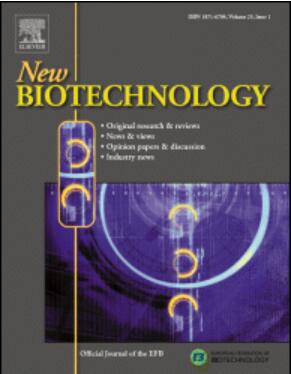Harnessing nature's palette: Exploring photosynthetic pigments for sustainable biotechnology
IF 4.5
2区 生物学
Q1 BIOCHEMICAL RESEARCH METHODS
引用次数: 0
Abstract
Photosynthetic microorganisms such as cyanobacteria, microalgae, and anoxygenic phototrophic bacteria (APB) have emerged as sustainable and economic biotechnology platforms due to their ability to transform energy from light into chemicals through photosynthesis. The light is absorbed by photosynthetic pigment-protein antenna complexes which are composed of pigments such as bacteriochlorophylls (BChl) and carotenoids in APB, and chlorophylls (Chl), phycobiliproteins (PBP), and carotenoids in cyanobacteria and microalgae. These photosynthetic pigments are essential in the physiology of photosynthetic microorganisms and offer significant health benefits due to their potent antioxidant activity, with properties that include anticancer, antiaging, antiproliferative, anti-inflammatory, and neuroprotective effects. This review first provides an overview of current advances in photosynthetic pigment synthesis and the latest strategies to increase pigment content in cyanobacteria, microalgae, and APB. It then delves into the pigment production process, covering biosynthetic pathways, critical environmental parameters, and extraction methods. Finally, the potential marketability of photosynthetic pigments together with current limitations are discussed.
利用自然的调色板:探索可持续生物技术的光合色素。
光合微生物,如蓝藻、微藻和无氧光养细菌(APB)已经成为可持续和经济的生物技术平台,因为它们能够通过光合作用将能量从光转化为化学物质。光被光合色素-蛋白质天线复合物吸收,该复合物由APB中的细菌叶绿素(BChl)和类胡萝卜素等色素以及蓝藻和微藻中的叶绿素(Chl)、藻胆蛋白(PBP)和类胡萝卜素等色素组成。这些光合色素在光合微生物的生理中是必不可少的,由于其强大的抗氧化活性,具有抗癌、抗衰老、抗增殖、抗炎和神经保护作用,因此对健康有重要的益处。本文首先综述了蓝细菌、微藻和APB中光合色素合成的最新进展和提高色素含量的最新策略。然后深入研究色素生产过程,涵盖生物合成途径,关键环境参数和提取方法。最后,讨论了光合色素的潜在市场以及目前的局限性。
本文章由计算机程序翻译,如有差异,请以英文原文为准。
求助全文
约1分钟内获得全文
求助全文
来源期刊

New biotechnology
生物-生化研究方法
CiteScore
11.40
自引率
1.90%
发文量
77
审稿时长
1 months
期刊介绍:
New Biotechnology is the official journal of the European Federation of Biotechnology (EFB) and is published bimonthly. It covers both the science of biotechnology and its surrounding political, business and financial milieu. The journal publishes peer-reviewed basic research papers, authoritative reviews, feature articles and opinions in all areas of biotechnology. It reflects the full diversity of current biotechnology science, particularly those advances in research and practice that open opportunities for exploitation of knowledge, commercially or otherwise, together with news, discussion and comment on broader issues of general interest and concern. The outlook is fully international.
The scope of the journal includes the research, industrial and commercial aspects of biotechnology, in areas such as: Healthcare and Pharmaceuticals; Food and Agriculture; Biofuels; Genetic Engineering and Molecular Biology; Genomics and Synthetic Biology; Nanotechnology; Environment and Biodiversity; Biocatalysis; Bioremediation; Process engineering.
 求助内容:
求助内容: 应助结果提醒方式:
应助结果提醒方式:


